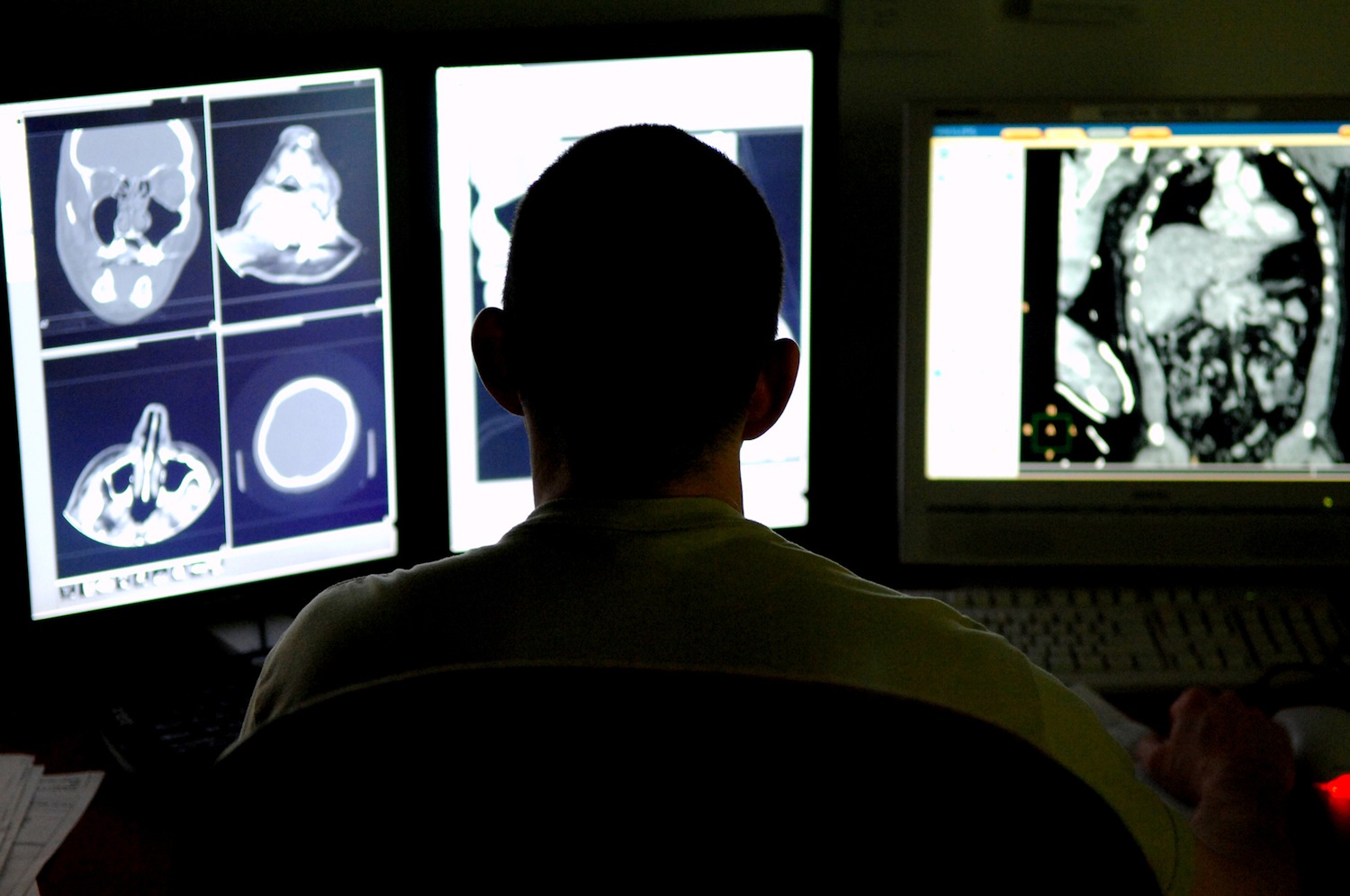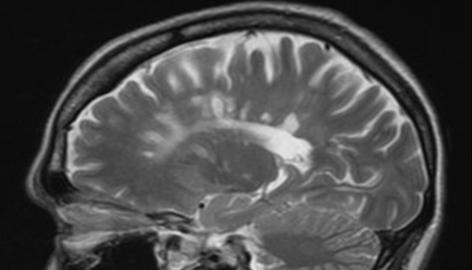Fluoride is THE main ingredient in rat poison.
Fluoride is THE main ingredient in Sarin nerve gas.
Fluoride is THE main ingredient in Prozac.
Fluoride destroys the brain (accumulates the pineal gland), the bones, the organs and causes cancer.
Hitler and Stalin used it in concentration camps and gulags as mass control instrument to make the prisoners docile.
Guess why fluoride is really added to your drinking water?
Over 170 million people, or 67 percent of the United States population drink fluoridated water. 43 of the 50 largest cities in the country are fluoridated.
After reading this you will understand what water fluoridation and fluoride containing anti-depressants like Prozac are all about.
Also take a close look how many times it has been scientifically proven that fluoride damages DNA.
A MUST-READ!

Material Added on November 3, 1997
(c) 1996,1997 Leading Edge Research Group. All Rights Reserved.
P.O. Box 7530, Yelm, Washington 98597
http://www.trufax.org Email: [email protected]
A Chronology of Fluoridation
1855 Smelters in Freiburg, Germany first paid damages to neighbors injured by fluoride emissions. (See 1893)
1893 The smelters in Freiburg, Germany paid out 80,000 marks in damages for fluorine contamination injuries and 644,000 marks for permanent relief. (See 1855, 1900, 1907).
1900 The existence of the smelting industry in Germany and Great Britain is threatened by successful lawsuits for fluorine damage and by budensome laws and regulations.
1907 The smelters in Freiburg, Germany (see 1893) are identified as the cause of cripplied cattle in the area since 1877, and fluorides are identified as the culprit.
1916 The first evidence of brown mottling of teeth is reported in the United States, and would be eventually found to be caused by fluorides in water.
1922 Aluminum production (along with production of toxic by-product sodium fluoride) increases. Aluminum cookware is mass introduced in the US, beginning the gradual accumulation of aluminum in the brains of Americans. Additional aluminum is injected into society in “antacids” and toothpaste tubes, which aggrevate the action of toxic fluorides.
1928 The equivalent of the U.S. Public Health Service is under the jurisdiction of Treasury Secretary Andrew W. Mellon, a founder and major stockholder of ALCOA aluminum, a major producer of toxic fluoride wastes. Mellon would step down from control of the Public Health in 1931.
1928 Edward L.Bernays, nephew to Sigmund Freud, writes the book Propaganda, in which he explains the structure of the mechanism which controls the public mind, and how it is manipulated by those who wish to create public acceptance for a particular idea or commodity. Says Bernays, “those who manipulate this unseen mechanism of society constitute an invisible government which is the true ruling power of our country. Our minds are molded, our tastes are formed, largely by men we have never heard of.” Bernays represents another connection to Germany and would be essential in the fluoride campaign in the United States. Wrote Bernay’s, “if you can influence group leaders, either with or without their conscious cooperation, you automatically influence the group which they sway.” (See Bernay’s, 1947, and the fluoride campaign).
1930 Kettering Laboratory is founded from gifts from Ethyl Corporation, General Electric and DuPont (all who have interlocking relationships with I.G. Farben in Germany) to “investigate chemical hazards in American industrial operations” under contract, with provision that research “shall not be released to the public without the consent of the contracting company.” During the mid-20th century, Kettering dominated the medical literature on the toxicology of fluorides, but information was not released into the public domain.
1931 A considerable portion of Kettering Laboratory’s facilities are dedicated to the study of fluorides. Under contract, the studies are not releasable to the public. (See also 1939, Mellon Institute)
1931 Three independent groups of scientists determine that fluoride in the water is the cause of dental mottling. Research teams from ALCOA Aluminum (who have fluorides as a hazardous by-product of aluminum manufacture) and the University of Arizona. Also shown by North African investigators and others. Dr. Gerald Cox of the Mellon Institute, owners of ALCOA, would later solve the expensive disposal problem with toxic fluorides by convincing others that it could be dumped in the public water supply as a “preventative” for tooth decay.
1931 Under an agreement with I.G. Farben, ALCOA accepts a restriction on the production of magnesium in the U.S, hampering the war effort, while Germany itself stepped up production. Most of the U.S. production was shipped out of the country to Germany.
1931 Public Health Service dentist H. Trendley Dean is dispatched by ALCOA founder Andrew Mellon to certain remote towns in the Western U.S. where water wells have a naturally high concentration of calcium fluorides. Dean’s mission would be to find out how much fluoride people could physically tolerate before obvious visible damage to their teeth. Dean publishes a purposely skewed and deceptive study which purports to show that at 1ppm, flourides result in the “reduction of tooth decay”. (See Gerald Cox, 1939)
1931 The Mellon Institute is ALCOA’s Pittsburgh research lab.
1931 From 1931 to 1939, the U.S. Public Health Service seeks to remove fluorides from water supplies because of endemic mottled teeth. ALCOA’s fluoride proposals have not been bought into by the public or government yet.
1931 I.G. Farben and Alcoa Aluminum sign Alted Agreement pooling patents, which would continue through 1939 and beyond. I.G. Farben complex begins large contributions to fund Nazi cause.
1933 A study is published in which it is shown that fluorides inhibit the action relative to lipase on ethyl acetate in vivo 50 percent at a concentration of one part in 15 million. (McClure, F.J., “A Review of Fluorine and its physiological effects”, Physiological Review, 13: 295-297, July 1933).
1933 According to a study by Freni in 1994 (71), in 1933 and again in 1984 that fluorides produce cumulative generational effects on biological organisms.
1937 U.S. Public Health Service publishes material indicating that fluoride concentrations in many U.S. cities varied between 0.6 ppm to 8.0 ppm. A concentration of 0.9 ppm means that over 10% of children have mottled teeth and tooth deformities.
1937 A clinical hygienic study by K. Roholm in 1937, Fluoride Intoxication, published by H.K. Lewis, London. Roholm is convinced that fluorides cross the placental barrier into the fetus. (70). This realization is echoed in 1951 by an M.D. and chemist from the University of Oregon Medical School.
1938 Dr. Wallace Armstrong and P.J.Brekhus at the University of Minnesota Department of Biochemistry publish a study in which they claim that the enamel of sound teeth had a significantly greater fluoride content than the enamel of teeth with cavities. Armstrong was to admit that these results were false. In a followup study in 1963, Dr. Armstrong found no difference in the fluoride contents of the enamal of sound or decayed teeth.
1938 The University of Mexico Bulletin, August 1, 1938, in an article entitled “Menace of Fluorine to Health”, states “Solutions of sodium fluoride with a fluoride content as low as one part in 15 million may inhibit the action of the lipase (pancreatic juice) as much as 50 percent.”
1939 The ALCOA company, the world’s largest producer of sodium fluoride,transfers it technology under the Alted Agreement to Germany. Dow Chemical follows suit.
1939 ALCOA-sponsored bochemist Gerald J. Cox fluoridates rats in his lab and mysteriously concludes that “fluoride reduces cavities”. He makes a public proposal that the U.S. should fluoridate its water supplies. Cox begins to tour the United States, stumping for fluoridation.
1939 Scientists at I.G. Farben prepare the first sample of fluorinated nerve gas Sarin.
1939 On September 29, 1939, Mellon Institute scientist Gerald J. Cox plays a major role in the promotion of fluoridation by saying “the present trend toward removal of fluorides from food and water may need reversal. Water engineers had been recommending a maximum allowable fluoride contaminant level of 0.1 part per million (ppm), maintaining a tenfold margin of safety. (When fluorides were eventually added to water through corporate pressure, that safety factor would be thrown out and the level raised tenfold beyond the engineering recommendations in 1939, when fluoride was properly recognized as a toxic contaminant. Note: Mellon Institute was founded by Andrew and Richard Mellon, former owners of ALCOA Aluminum, plagued by disposal problems of toxic fluoride by products. ALCOA also had a relationship with I.G. Farben in Germany)
1939 U.S. Public Health Service regulations state “the presence of fluorides in excess of 1 ppm shall constitute rejection of the water supply.” (Yet, when water fluoridation is instituted, levels are set at a minumum of 1 ppm)
1939 Volume 9 Report to the House Un-American Activities Committee delves deeply into the alleged use of fluoridation to keep the American people docile, so they would accept the changing of their system of government to a socialist state.
1940 “Fluoride inhibits neuromuscular activity”. Ref: Russo, G. Att.Acad. Sci. Nat.., 1940.
1940 Soviet concentration camps maintained by fluoride administration to inmates to decrease resistance to authority and induce physical deteriorization.
1942 “Fluorine may cause anoxia in the newborn and shorten the period of their survival” Ref: Himwich, H.E., et al., American Journal of Physiology, 1942.
1942 Germany becomes worlds largest producer of aluminum (and Sodium Fluoride). Fluoride is used in the concentration camps to render the prisoners docile and inhibit the questioning of authority.
1943 Researchers from the US Public Health Service examine the health of residents of Bartlett, Texas to see if the 8ppm fluoride in the drinking water was affecting their health. It was checked again in 1953. They find that the death rate in Bartlett was three times higher than a neighboring town which contained 0.4 ppm fluoride.
1943 A special New York State Health Department Committee is appointed to study the advisability of adding fluoride to Newburg’s drinking water, chaired by Dr. Hodge, then chief of fluoride toxicity studies for the Manhattan Project.
1943 The Journal of the American Medical Association on September 18, 1943, contains an article, “Chronic Fluorine Intoxication”, which states, “fluorides are general protoplasmic poisons, changing the permeability of the cell membrane by inhibiting certain enzymes. The exact mechanism of such actions, it was said, are obscure. The sources of fluorine intoxication are drinking water containing 1ppm or more of fluorine, fluorine compounds used as insecticidal sprays for fruits and vegatables (cryolite and barium fluoro- silicate) and the mining and conversion of phosphate rock to superphosphate, which is used as a fertilizer. That process alone releases approximately 25,000 tons of pure fluorine into the atmosphere annually. Other sources of fluorine intoxication is from the fluorides used in the smelting of many metals, such as steel and aluminum, and in the production of glass, enamel and brick.”
1943 Environmental pollution by toxic metals, including fluorides, affects forests, livestock, and urban residents, but coverage remains on local levels.
1944 “Even at 1ppm, fluoride in drinking water poisons cattle, horses and sheep” (Moules, G.R., Water Pollution Research and Summary of Current Literature, 1944.
1944 The city manger of Grand Rapids, Michigan announces that the Michigan State Department of Health is planning a long range experiment with fluoridated water and that Grand Rapids was selected as the location for the experiment. The city commission approves a motion to fluoridate on July 31, and decides it is to begin in January 1945, despite the warning issued three months earlier, ironically, by the American Dental Association. Grand Rapids becomes the first city in the United States to conduct this experiment. It was to serve as the test city to be compared against un-fluoridated Muskegon for a period of ten years relative to tooth decay, “at which time it would be determined whether or not fluoride was “safe and effectiv.” Dr. H. Trendley Dean was put in charge of the project. The experiment was terminated early, after the control city was fluoridated, ruining the validity of the experiment, with the pronouncement that fluorides in public water supplies was “safe”.See 1945.
1944 The Pentagon Scientific Research and Development Group further pursued the project to fluoridate the drinking water of Newburg, New York. Members included Henry L. Barnett, a captain in the Manhattan Project medical section, John W. Fertig, SRDG, Dr. Hodge, and David Ast, chief dental officer of the New York State Health Department, who was placed in charge of the Newburg Project. The group sought information on cumulative effects, which was also a goal of the Manhattan Project. (See below)
1944 Through 1948. Previously classified documents from Manhattan Project which indicate the government knew the physiological and psycho-behavioral effects of fluorides, as a result of studies connected with determining the effect of uranium hexafluoride processing on workers, as well as studies in defense of litigation against the project by tree growers who experienced fluoride damage from airborne pollutants connected with the project. Ref: Declassified documents from the National Archives published in 1997.
1944 An April 29, 1944 Manhattan Project memo, released in 1997, states “Clinical evidence suggests that uranium hexafluoride may have a rather marked central nervous system effect, with mental confusion, drowsiness and lassitude as the conspicuous features… it seems that the fluoride component is the causative factor….since work with these compounds is essential, it will be necessary to know in advance what mental effects may occur after exposure, if workmen are to be properly protected. This is important not only to protect a given individual, but also to prevent a confused workman from injuring others by improperly performing his duties”. Ref: Previously classified SECRET Manhattan Project Memo, 29 April 1944, declassified and released from the National Archives.
1944 Oscar Ewing is put on the payroll of the Aluminum Company of America ALCOA), as an attorney, at an annual salary of $750,000. In 1947, Ewing was made Federal Security Agency Administrator, with the announcement that he was taking a big cut in salary. The US Public Health Service, then a division of the FSA, comes under the command of Ewing, and he begins to vigorously promote fluoridation nationwide. Ref: May 25-27 Hearings before the Committee on Interstate and Foreign Commerce. A by-product of aluminum manufacture is toxic sodium fluoride. Ewings public relations strategist for the fluoride campaign was the nephew of Sigmund Freud, Edward L. Bernays. Bernays conducts a public relations campaign to promote fluorine ingestion by applying Freudian theory to induce public acceptance. It was one of Bernays most successful campaigns.
1944 The October 1944 issue of the Journal of the American Dental Association cautions that “knowledge of the subject does not warrant the introduction of fluorine in community water supplies generally. Sodium fluoride is a highly toxic substance, and while its applications in safe concentrations, and under strict control by competent personnel, may prove to be useful therepeutically, under other circumstances it may definitely be harmful. To be effective, fluorine must be ingested into the system during the years of tooth development, and we do not yet know enough about the chemistry involved to anticipate what other conditions may be produced in the structure of the bone and other tissues of the body generally. We do know that the use of drinking water containing as little as 1.2 to 3.0 ppm of fluorine will cause such developmental disturbances in bones as osteosclerosis, spondylosis, and osteopetrosis, as well as goiter, and we cannot run the risk of producing such serious systemic disturbances in applying what is at present a doubtful procedure intended to prevent development of dental disfigurements among children … because of our anxiety to find some therapeutic procedure that will promote mass prevention of caries, the seeming potentialities of fluorine appear speculatively attractive, but, in the light of our present knowledge or lack of knowledge of the chemistry of the subject, the potentialities for harm far outweigh those for good.”
1945 An FDA Chief inspector discovers that fluorides are being added to beer by the Commonwealth Brewing Company of Massachusetts (the same state where they did experimental fluoride treatments on institutionalized children). The owner of the brewery was arrested and subjected to a Federal jury trial for poisoning the beer. The indictment charged that the beer contained “an added poison or deleterious poison, fluoride, which was unsafe within the meaning of the statute (Section 301a of the Food, Drug and Cosmetic Act), since it was a substance not required in the production of the beer, it could have been avoided by good manufacturing practice.” The fact was established that the fluoride was added in the concentration of 0.5 ppm. The jury was instructed that fluoride was established to be harmful and poisonous, and that it was unimportant to show how much beer it would take to demonstrate harmful effects. Beer was classified as a food and fluoride as a poison in 1945. The Commonwealth Brewery Company was slapped with a $10,000 fine, and Kaufmann, the owner, was given a 6 month suspended jail sentence and a three year probation period.
1945 Newburgh, New York has their water supply fluoridated in May 1945. Subsequent exams of the children by x-ray reveal that almost 14% have cortical defects in bone, compared to the nearby unfluoridated town of Kingston, where 7.5% have bone defects. The data is suppressed. In tandum, Project F (connected with the Manhattan Project) conducted their own studies of Newburg residents, focusing on the amounts of fluoride Newburg residents retained in the tissues and blood – key information sought by the bomb program, according to previously classified documents released in 1997. See 1956.
1945 The newspaper Philadelphia Record, 18 October 1945, reveals an article entitled “First Bomb Suit for Ruined Peaches filed by Salem County Growers for $400,000” details suits against chemical manufacturers connected with the Manhattan Atomic Bomb Project for hydrogen fluoride damage to peach groves. Companies involved were DuPont de Nemours (which has been interacting with I.G. Farben in Nazi Germany), the Sun Oil Company and the General Chemical Company.
1945 The government does a public test case of fluoridation, comparing fluoridated Grand Rapids with unfluoridated Muskegon, Michigan. The study is to last ten years. After one year, it becomes obvious to the government that fluorides do not conform to their public propaganda, and the study is terminated. The city of Muskegon is then fluoridated in 1947 to conceal the difference in effect. Other experiments are performed covertly on population areas, without the knowledge of the subjects.
1945 Covert experiments with fluorides are conducted in Massachusetts and in Connecticut between 1945 and 1946 on indigent, mentally retarded children at state-run schools. According to 1954 testimony of Florence Birmingham, a trustee of the Wrentham State School in Massachusetts, her schools administration learned only by accident that fluorides were being put in the drinking water.
1945 A study reveals that fluoride’s affinity for magnesium and manganese ions enables it to deplete their availability for vital enzyme functions. (Borei, H., “Inhibition of Cellular Oxidation by Fluoride”, Arkiv.Kemi,Mineral,Geol., 20A, No. 8, 1945).
1946 A letter from the U.S. Engineer Office, Manhattan District, Oak Ridge, Tennessee, to Colonel Warren, Manhattan Project, 1 May 1946, regarding a trip to the DuPont plant, discusses the fluoride damage to the environment. The letter also states “Would there be any use in making attempts to counteract the local fear of fluoride on the part of residents of Salem and Gloucester counties through lectures on fluoride toxicology and perhaps the usefulness of fluoride in tooth health?” Letter signed by Harold C. Hodge, who was also involved in the Newburgh, New York experiments. Ref: Previously classified SECRET Manhattan Project Letter, 1 May 1946, declassified and released from the National Archives in 1997.
Read moreFluoride: A Chronological History


















